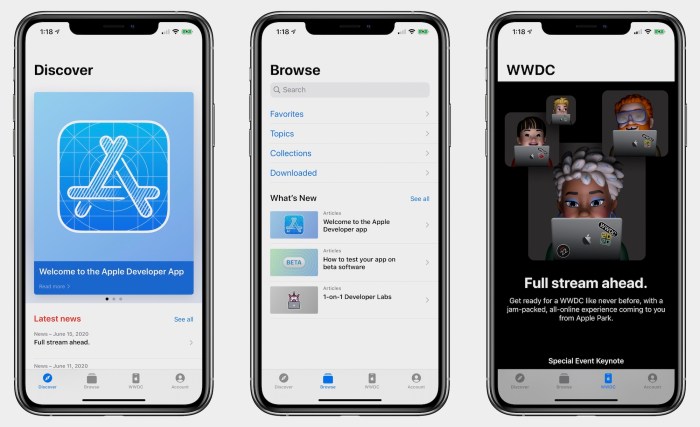User Perspective on Subscription Apps
The world of mobile apps has evolved, moving beyond one-time purchases to recurring subscriptions. For users on the Apple platform, these subscription apps offer a unique blend of value, convenience, and access to premium features. Understanding the motivations and preferences of users who subscribe to these apps is crucial for developers and publishers seeking to build successful subscription models.
Factors Influencing Subscription Decisions
Users’ decisions to subscribe to apps are influenced by a combination of factors. These factors can be broadly categorized into three key areas: price, value proposition, and user experience.
- Price: Price remains a significant factor in subscription decisions. Users are more likely to subscribe to apps that offer a competitive price point relative to the value they receive. This includes considering the cost of competing apps, the frequency of billing cycles, and the availability of free trials or discounts.
- Value Proposition: The value proposition of a subscription app is central to attracting and retaining users. This encompasses the features, benefits, and content that the app provides. Users are more likely to subscribe to apps that offer unique or exclusive content, advanced features, or a compelling value proposition that addresses their specific needs.
- User Experience: A positive user experience is essential for subscription app success. Users are more likely to stick with apps that are easy to use, intuitive to navigate, and provide a seamless experience. This includes factors like app performance, responsiveness, and the overall design and aesthetics of the app.
Challenges and Opportunities
Attracting and retaining users for subscription apps presents both challenges and opportunities.
- Challenges: One of the primary challenges is convincing users to switch from free apps or one-time purchases to a subscription model. This requires demonstrating the value of the subscription and building trust with users. Another challenge is managing churn, which is the rate at which users cancel their subscriptions. This can be influenced by factors like pricing, value perception, and user experience.
- Opportunities: Subscription models offer several opportunities for app developers and publishers. They provide a consistent revenue stream, enabling investments in app development and innovation. Subscriptions also allow for greater engagement with users, offering opportunities for personalized content, exclusive features, and community building.
Impact on the App Ecosystem: Apple Promoting Subscription Apps
Apple’s push for subscription apps has undeniably shaken up the app ecosystem, prompting a significant shift in how developers approach monetization and how users consume digital content. This move has spurred a wave of innovation, while also raising concerns about the long-term implications for both developers and users.
The Rise of Subscription Models, Apple promoting subscription apps
The growing popularity of subscription apps has led to a more diverse and competitive landscape for app developers. Many developers have embraced subscription models, offering recurring access to premium features, exclusive content, or ongoing services. This shift has created new opportunities for developers to generate consistent revenue streams and build sustainable businesses.
- Increased Revenue Opportunities: Subscription models allow developers to establish consistent revenue streams, reducing reliance on one-time purchases. This is particularly beneficial for apps that provide ongoing value, such as streaming services, productivity tools, and gaming platforms.
- Enhanced User Engagement: Subscription models encourage user engagement by offering continuous value and updates. Developers can incentivize users to stay subscribed by providing regular content updates, new features, and exclusive benefits.
- Reduced Development Costs: By offering subscriptions, developers can spread the cost of development and maintenance over a longer period, making it more feasible to create complex or resource-intensive apps.
Competitive Landscape
The shift towards subscription models has intensified competition among app developers. Many apps now offer subscription tiers, with varying levels of features and content. This has created a dynamic environment where developers must constantly innovate and improve their offerings to stay ahead of the curve.
- Increased Competition: Developers are facing increased competition from both established players and new entrants, all vying for user subscriptions.
- Price Wars: As competition intensifies, some developers may engage in price wars, lowering subscription prices to attract users. This can lead to decreased profitability for all developers.
- Focus on User Retention: The key to success in a subscription-driven ecosystem is user retention. Developers must prioritize providing high-quality experiences and ongoing value to keep users subscribed.
Future Trends and Predictions
Apple’s relentless push for subscription apps has dramatically reshaped the app market. As we look ahead, several trends and predictions indicate that this momentum will continue, leading to significant changes in the app ecosystem and user behavior.
Evolution of Subscription Models
The current subscription model is evolving beyond basic recurring payments. This shift is driven by user expectations for greater value and flexibility.
- Tiered subscriptions: Apple is likely to see more apps offer tiered subscription plans. These plans provide users with varying levels of access and features, allowing them to customize their subscriptions based on their individual needs and budgets. For example, a music streaming app could offer a basic plan with ad-supported streaming, a premium plan with ad-free listening and offline downloads, and an exclusive plan with high-fidelity audio and curated playlists. This approach caters to a wider range of users and encourages increased engagement by offering a more personalized experience.
- Bundled subscriptions: Apple may also see the rise of bundled subscriptions, where multiple apps or services are offered at a discounted price. This strategy could be particularly appealing to users who rely on several apps for their daily activities, such as productivity, entertainment, and fitness. For instance, a “Productivity Bundle” could include a note-taking app, a task management app, and a calendar app, all for a single monthly fee. Bundled subscriptions provide a convenient and cost-effective way for users to access a suite of complementary services, simplifying their digital lives and increasing app adoption.
- Micro-subscriptions: Micro-subscriptions are becoming increasingly popular, allowing users to pay for specific features or functionalities on an as-needed basis. This approach offers greater flexibility and control to users, enabling them to access only the features they require, rather than paying for a full subscription. For example, a photo editing app could offer a micro-subscription for access to advanced editing tools, while a social media app could offer a micro-subscription for premium features like boosted posts or early access to new features. Micro-subscriptions cater to users who value customization and pay-as-you-go options, offering a more tailored and cost-effective approach to app usage.
Advanced Technologies in Subscription Apps
Technological advancements are driving innovation in subscription app models, enhancing user experience and unlocking new possibilities.
- Artificial Intelligence (AI): AI is transforming the way subscription apps personalize content and deliver value to users. AI-powered recommendation engines can analyze user preferences and behavior to suggest relevant content, features, and services. This personalized experience enhances user engagement and satisfaction, leading to increased subscription retention. For example, a streaming service could use AI to recommend movies and TV shows based on the user’s viewing history, while a fitness app could use AI to create personalized workout plans tailored to the user’s fitness goals and preferences.
- Augmented Reality (AR) and Virtual Reality (VR): AR and VR technologies are opening up new avenues for immersive and interactive experiences within subscription apps. These technologies can create engaging and interactive content, enhance user engagement, and drive higher subscription rates. For example, a gaming app could offer AR-enabled gameplay experiences, while an educational app could use VR to create immersive learning environments. AR and VR are transforming the way users interact with subscription apps, creating more engaging and immersive experiences.
- Blockchain technology: Blockchain technology can be used to create secure and transparent subscription models. Blockchain-based subscription systems can ensure secure payment processing, prevent fraud, and provide users with complete transparency regarding their subscription data. This technology can enhance trust and security in the subscription app ecosystem, creating a more reliable and transparent experience for users.
Impact on App Market and User Behavior
Apple’s continued promotion of subscription apps will have a profound impact on the app market and user behavior.
- Shifting App Development Focus: App developers are increasingly focusing on creating subscription-based apps. This shift is driven by the potential for recurring revenue and the opportunity to build long-term relationships with users. As a result, the app market is seeing a surge in subscription-based apps across various categories, from productivity and entertainment to health and fitness.
- Rise of Freemium Models: Freemium models, which offer a free version with limited features and a paid subscription for full access, are becoming increasingly popular. This approach allows developers to attract a larger user base and convert a portion of free users to paying subscribers. Freemium models are a successful strategy for driving app adoption and generating revenue through subscriptions.
- Changing User Expectations: Users are becoming increasingly accustomed to subscription-based models. This shift is driven by the convenience and flexibility of subscriptions, as well as the growing availability of high-quality subscription apps across various categories. As a result, users are increasingly willing to pay for premium features and services, leading to a growing market for subscription apps.
Apple promoting subscription apps – Apple’s push towards subscription apps has undeniably reshaped the app landscape. The benefits for Apple are clear: increased revenue streams and user engagement. But the implications for developers and users are still unfolding. While subscription apps offer potential for greater revenue and user loyalty, they also raise concerns about pricing, user experience, and the potential for app lock-in. As the app market continues to evolve, it’s essential to stay informed about these trends and their potential impact on the future of app development.
Apple’s been pushing subscription apps hard, but let’s be real, sometimes a good old-fashioned update is all you need. Take the Nexus 7 2013 LTE receiving Android 5.1 , for example. Sure, it’s not the latest and greatest, but a little refresh can go a long way. Maybe Apple could learn a thing or two about keeping their older devices relevant with a little bit of love, instead of just trying to sell you on the next big thing.
 Standi Techno News
Standi Techno News

